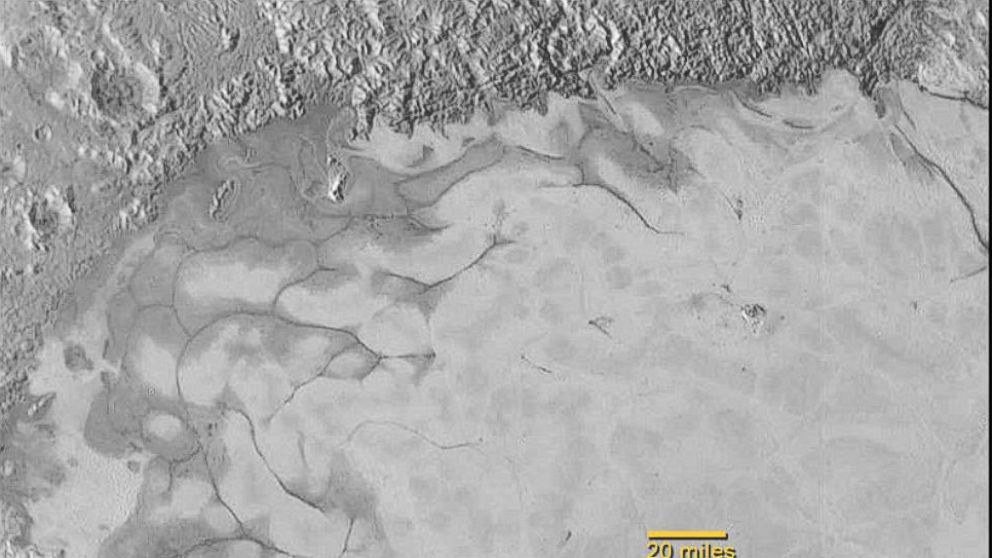New Horizons Catches Dark Side of Pluto
Photograph gives possible reason for Pluto's reddish hue.
— -- New Horizons continues to yield a bounty of discoveries, with NASA today showing stunning new photos, including haze and flowing ice on Pluto.
Taken seven hours after New Horizons made its closest pass by Pluto, an image released today shows the dwarf planet shrouded in darkness and surrounded by a band of light. Most curious to scientists were the layers of haze which appeared higher than expected from Pluto's surface.
"You can only get this image from going to Pluto and crossing to the dark side and looking back," New Horizons' principal investigator Alan Stern said at a news conference today. "Emotionally, it also represents a huge scientific discovery."
Initial analyses show the layers of atmospheric haze are located 30 and 50 miles above Pluto's surface, upending scientists' previous belief that temperatures would be too warm for hazes to form that high above Pluto's surface.
"The hazes detected in this image are a key element in creating the complex hydrocarbon compounds that give Pluto’s surface its reddish hue," New Horizons co-investigator Michael Summers said.

The creation of the haze is believed to follow this model: Methane gas is broken down by ultraviolet sunlight, creating a buildup of more hydrocarbon gases. Those gases are then believed to fall to the lower parts of the atmosphere where they cool and condense as ice particles, creating the spectacular haze New Horizons caught on camera.
Inside the Tombaugh region, the name NASA has given Pluto's heart-shaped feature, New Horizons found evidence of flowing ices moving across Sputnik Planum, a relatively young geological area in the western part of the heart.
NASA expects to learn even more about New Horizons over the next 16 months as it sends its trove of data back to Earth. Stern said just 5 percent of the data has been transmitted to Earth so far.
"We are only scratching the surface," Stern said.




